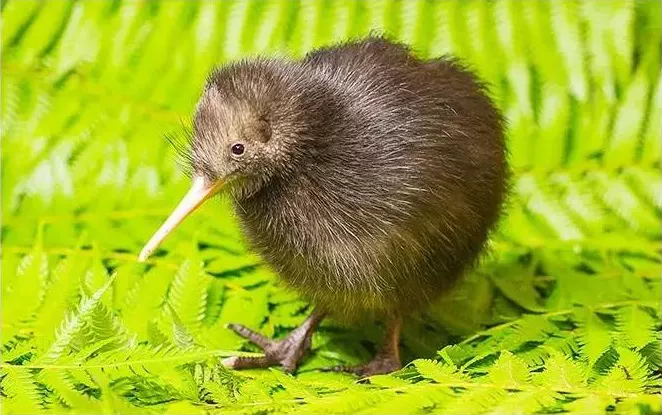The flightless kiwi bird, native to New Zealand, holds a special place in the hearts of both locals and wildlife enthusiasts worldwide. With its distinct appearance and unique behaviors, the kiwi has fascinated scientists for years. One intriguing aspect of these curious creatures is their apparent lack of wings. In this article, we delve into the world of kiwi birds and explore the truth behind their winglessness.
Anatomy and Evolution
To understand why kiwi birds don’t fly, it’s essential to examine their anatomy and evolutionary history. Kiwis belong to the ratite group of flightless birds, which includes ostriches, emus, cassowaries, and rheas. Unlike most birds, who possess large, powerful wings used for flight, kiwis have evolved smaller, non-functional wings that are hidden beneath their feathers.
Over millions of years of evolution, kiwi birds adapted to their unique environment in New Zealand, where they faced few natural predators. As a result, their wings gradually became reduced in size since they no longer served a vital purpose in flight. These vestigial wings are now approximately 5 cm long and lack the necessary skeletal structure and musculature for effective flying.
Adaptations for Terrestrial Living
Although kiwi birds can’t fly, they have undergone remarkable adaptations to thrive in their terrestrial habitat. Their wings, while unable to support flight, have become highly specialized for other purposes. The primary function of kiwi wings is to provide balance and maneuverability as they navigate through dense forests and undergrowth.
In addition to their wings, kiwi birds possess several other adaptations that aid their terrestrial lifestyle. They have strong legs and muscular thighs, enabling them to move swiftly on the ground. Their long, flexible beaks are perfect for probing soil and leaf litter in search of insects, worms, and other invertebrates, which form the majority of their diet.
Kiwi feathers also play a crucial role in their survival. They are coarse, hair-like, and often resemble fur instead of traditional feathers. This unique plumage provides excellent camouflage, helping kiwis blend seamlessly with their forested surroundings, making them elusive prey for predators.
Reproduction and Parental Care
Kiwi birds have fascinating reproductive behaviors that contribute to their conservation status as endangered species. Unlike most birds, they exhibit monogamy, forming long-term partnerships with their mates. Breeding pairs work together to build nests, incubate eggs, and raise their chicks.
The female kiwi lays relatively large eggs in proportion to her body size, typically representing about 20% of her weight. After laying the egg, it is the male’s responsibility to incubate it. This unique role reversal allows the female to quickly replenish her energy reserves. Incubation periods can last between 60 and 90 days, depending on the species.
Once hatched, kiwi chicks are remarkably independent and display advanced development compared to many other bird species. They possess well-developed feathers and are ready to face the challenges of the forest floor within days of hatching. However, they remain under their parents’ care for several months, benefiting from their guidance and protection.
Conservation Efforts
Kiwi birds face numerous threats in their natural habitat, including predation by invasive species, habitat loss, and human activities. Consequently, several conservation organizations and initiatives are dedicated to preserving these iconic birds.
One prominent conservation measure involves protecting kiwi eggs and chicks from predators, such as stoats and rats, by relocating them to predator-free sanctuaries or employing specialized pest control mechanisms. Efforts are also focused on preserving and restoring kiwi habitats, ensuring a healthy ecosystem for their survival.
Education and awareness programs play a vital role in engaging the public and fostering support for kiwi conservation. By highlighting the unique characteristics of these flightless birds, organizations aim to inspire individuals to contribute towards their preservation through donations, volunteering, or adopting a kiwi bird as a symbolic gesture.
Conclusion
While kiwi birds may lack functional wings, they have adapted marvelously to their terrestrial lifestyle. Their reduced wings, specialized beaks, strong legs, and camouflage plumage exemplify their evolutionary journey and ability to thrive in the unique environment of New Zealand. However, due to various threats, kiwis remain endangered, and concerted efforts are needed to ensure their long-term survival. By raising awareness, implementing conservation measures, and fostering community involvement, we can contribute to the continued existence of these fascinating flightless birds, allowing future generations to marvel at their beauty and resilience.


 Facebook
Facebook  Instagram
Instagram  Youtube
Youtube 